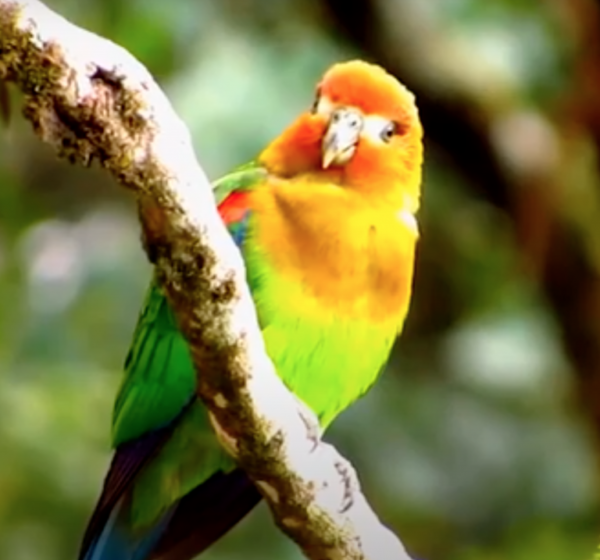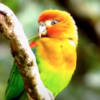Marley – Rusty-faced parrot – For Sale – Top Breeders
Marley – Rusty-faced parrot (Hapalopsittaca amazonina) is a species of parrot in the family Psittacidae. It is found in Colombia and Venezuela. Its natural habitats are subtropical or tropical moist montane forests and subtropical or tropical high-altitude shrubland. It is threatened by habitat loss. Its small population consists of very small, sparrottered subpopulations that are likely to be undergoing continuing declines, owing to widespread habitat loss.
The Rusty-faced Parrot (Hapalopsittaca amazonina) is a vibrant and relatively lesser-known species of parrot native to the cloud forests of South America. Known for its distinctive facial coloration and elusive nature, this bird has intrigued ornithologists and birdwatchers alike. Belonging to the family Psittacidae, it is one of the more colorful members of the genus Hapalopsittaca, which includes several highland parrot species.
The Rusty-faced Parrot is a medium-sized parrot, measuring about 23–24 centimeters (9–9.5 inches) in length. Its most notable feature is its reddish-brown or rusty-colored face, which contrasts beautifully against the primarily green plumage of its body. The crown and nape often show a bluish tint, and the wings have darker green flight feathers. The underparts are a lighter shade of green, with hints of yellowish or olive tones in some individuals. Its beak is strong and pale in color, and its eyes are encircle by a narrow, bare, whitish ring. This species exhibits minimal sexual dimorphism, meaning males and females look almost identical to the human eye. Juveniles tend to have duller plumage and a less pronounced rusty coloration on the face.
Habitat and Distribution
The Rusty-faced Parrot is native to the Andean cloud forests of Colombia, Venezuela, and parts of Ecuador. It inhabits montane forests at elevations typically ranging from 2,000 to 3,400 meters above sea level. These forests, rich in moisture and biodiversity, provide the perfect environment for this parrot’s survival. The species is particularly fond of oak forests and areas with abundant fruiting trees and epiphytes. Due to habitat loss and fragmentation caused by agriculture, logging, and human encroachment, the Rusty-faced Parrot’s distribution has become increasingly patchy.
Diet and Behavior
Primarily frugivorous, the Rusty-faced Parrot feeds on a wide variety of fruits, seeds, berries, and occasionally flowers. It plays a crucial role in its ecosystem as a seed disperser, helping to maintain the health and diversity of the forest. These parrots are typically social birds, often seen in small flocks of 5 to 20 individuals, though larger groups can sometimes be spotted around abundant food sources. Their flight is fast and direct, and they communicate with each other through a series of sharp, high-pitched calls that echo through the misty forests.
Conservation Status
The Rusty-faced Parrot faces significant threats due to habitat destruction, primarily from deforestation for agriculture and urban development. Although it is not as heavily trapped for the pet trade as some other parrot species, localized trapping does occur. Conservation efforts focusing on habitat protection and reforestation projects are essential to ensure the long-term survival of this beautiful parrot.












Reviews
There are no reviews yet.